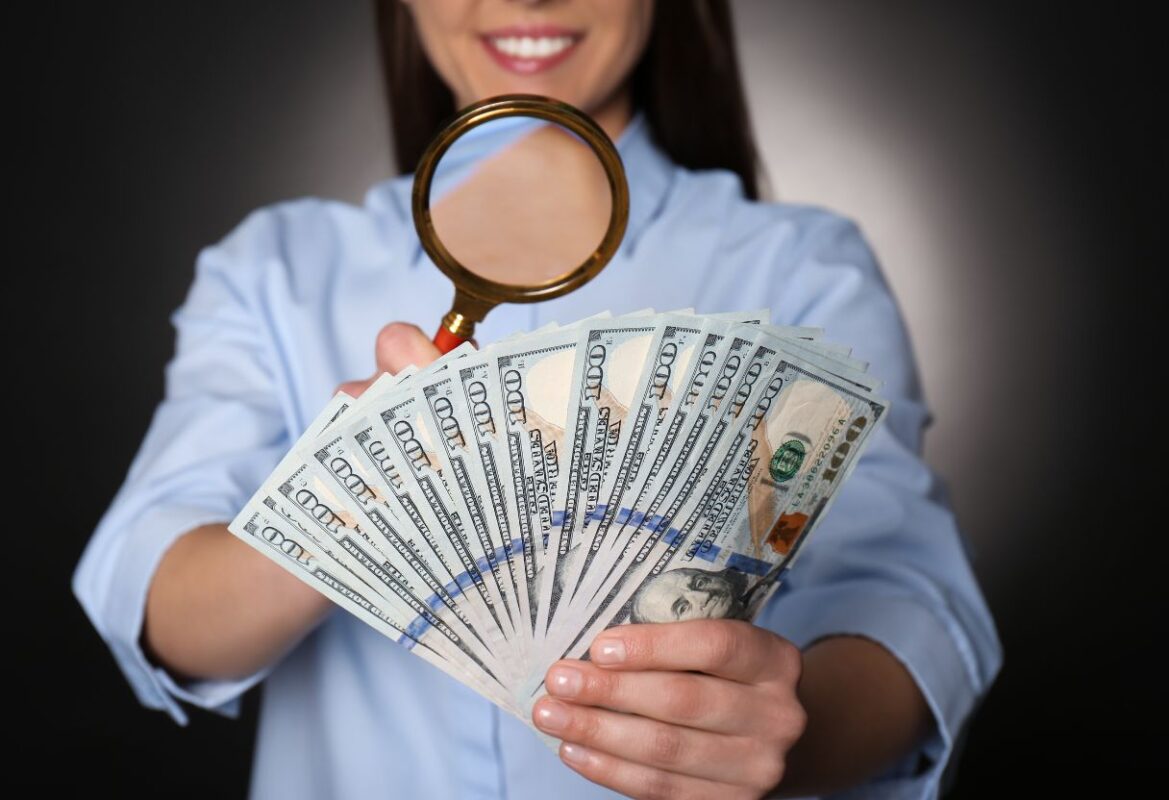No products in the cart.
Fake Money
How to Detect Counterfeit Bank Notes: A Comprehensive Guide
Counterfeit money remains a serious issue worldwide, impacting both businesses and consumers. Despite significant advancements in currency security, counterfeiters continue to improve their tactics, making it essential for everyone to know how to identify fake bank notes. Understanding the security features on bank notes and practicing simple detection techniques can save you from financial losses. This guide will walk you through essential tips on counterfeit detection techniques to help you confidently spot the signs of a Counterfeit Bank Notes.
How to Detect Counterfeit Bank Notes – Step by Step
Section 1: Understanding the Basics of Counterfeit Bank Notes
What Are Counterfeit Bank Notes?
Counterfeit money refers to fake bank notes produced to imitate authentic currency, often with the intent to deceive. These forged notes can cause significant economic losses, especially for businesses handling large volumes of cash.
Why Counterfeit Detection is Important
Accepting counterfeit currency can lead to direct financial losses because once detected, you may not be able to recover the funds. Additionally, circulating counterfeit notes harms the economy, so counterfeit currency identification is crucial not just for your wallet but for society as a whole.
Section 2: Common Features of Authentic Bank Notes
Physical Characteristics of Real Bank Notes
One of the best counterfeit detection techniques involves recognizing the distinct feel of a real banknote. Authentic banknotes are often made from special materials (such as cotton-based paper) that make them thicker and more durable than typical printing paper. Counterfeiters frequently use cheaper materials, so knowing the texture difference can be helpful.
Security Features Built into Bank Notes
Many central banks use unique security features on bank notes to prevent forgery. Here are a few features to look out for in different currencies:
- Watermarks: Typically, authentic banknotes include watermarks, which are translucent images that can be seen when held up to light.
- Security Threads: A real banknote often has an embedded or woven thread that’s visible when held up to light.
- Color-shifting Ink: Tilt the banknote to observe any color changes in specific areas, as this is a feature used in many major currencies.
- Holograms: Holographic elements are often present on larger denominations.
- Raised Printing: Genuine banknotes usually feature raised printing that you can feel with your fingers.
Each currency may have its own unique combinations of security elements. Familiarizing yourself with your currency’s distinct counterfeit banknote security features will be invaluable for counterfeit detection.
Section 3: How to Spot a Counterfeit Bank Note
The Touch Test: Feeling the Paper and Texture
Authentic banknotes have a unique, crisp feel. Rub your fingers across the bill to feel for raised printing and other texture differences. Many fake bank notes are produced on smooth paper that doesn’t have the same tactile experience.
The Look Test: Inspecting Visual Security Features
Carefully inspect the bill for visible signs of counterfeit cash. Look for subtle but distinct security elements like micro-printing (small printed text), holograms, and color-shifting ink. By tilting the bill in the light, you should see these elements clearly change, especially on higher denominations.
The Light Test: Using Light to Examine Transparency
One of the most straightforward counterfeit detection techniques is the light test. Hold the note against a light source to reveal watermarks and embedded security threads that aren’t visible otherwise.
Using Tools to Assist Detection
For businesses, using detection tools can offer added confidence. Counterfeit detection pens are commonly used, though they’re not foolproof. UV light tools are also helpful, as they reveal specific elements in real banknotes that aren’t visible to the naked eye.
Section 4: Advanced Counterfeit Detection Tips
Using UV Light to Detect Invisible Security Features
Using a UV light is an advanced yet accessible way to identify counterfeit currency. When a real banknote is placed under a UV light, hidden security features may glow or reveal patterns unique to genuine notes. Counterfeit notes often lack these UV-reactive details or display them inaccurately.
Identifying Micro-Printing and Small Details
Micro-printing involves extremely small text that is difficult for counterfeiters to reproduce. Look closely at specific areas of the bill (often borders or intricate designs), which should contain tiny text that is sharp and clear under magnification.
Serial Numbers and Alignment
Authentic banknotes have precisely aligned serial numbers, with consistent spacing and size. If the serial number appears misaligned or uneven, it’s likely a counterfeit. Comparing a suspicious bill to a known authentic bill is a good counterfeit currency identification method.
Section 5: Handling Suspected Counterfeit Money
What to Do If You Suspect a Counterfeit Banknote
If you believe you’ve encountered counterfeit cash, try to handle the situation cautiously. Politely refuse the note if it’s safe to do so and avoid confrontation. If it’s already in your possession, do not attempt to pass it on, as it’s illegal to knowingly circulate counterfeit currency.
Reporting to Authorities
Immediately report any suspected counterfeit banknotes to the authorities. Contact your local police or the central bank’s counterfeit department to ensure proper handling of the issue.
Protecting Your Business from Counterfeit Money
For business owners, training employees on how to identify fake bank notes can save significant losses. Consider investing in counterfeit detection tools and instituting protocols for handling suspicious bills to protect your business effectively.
Conclusion
Detecting counterfeit money might seem daunting, but with practice, recognizing the signs of counterfeit cash becomes second nature. By familiarizing yourself with your currency’s security features on bank notes and using simple techniques like the touch, look, and light tests, you can confidently identify fake bank notes. Keep these counterfeit detection techniques in mind and share them with others to help reduce the circulation of fake money.

